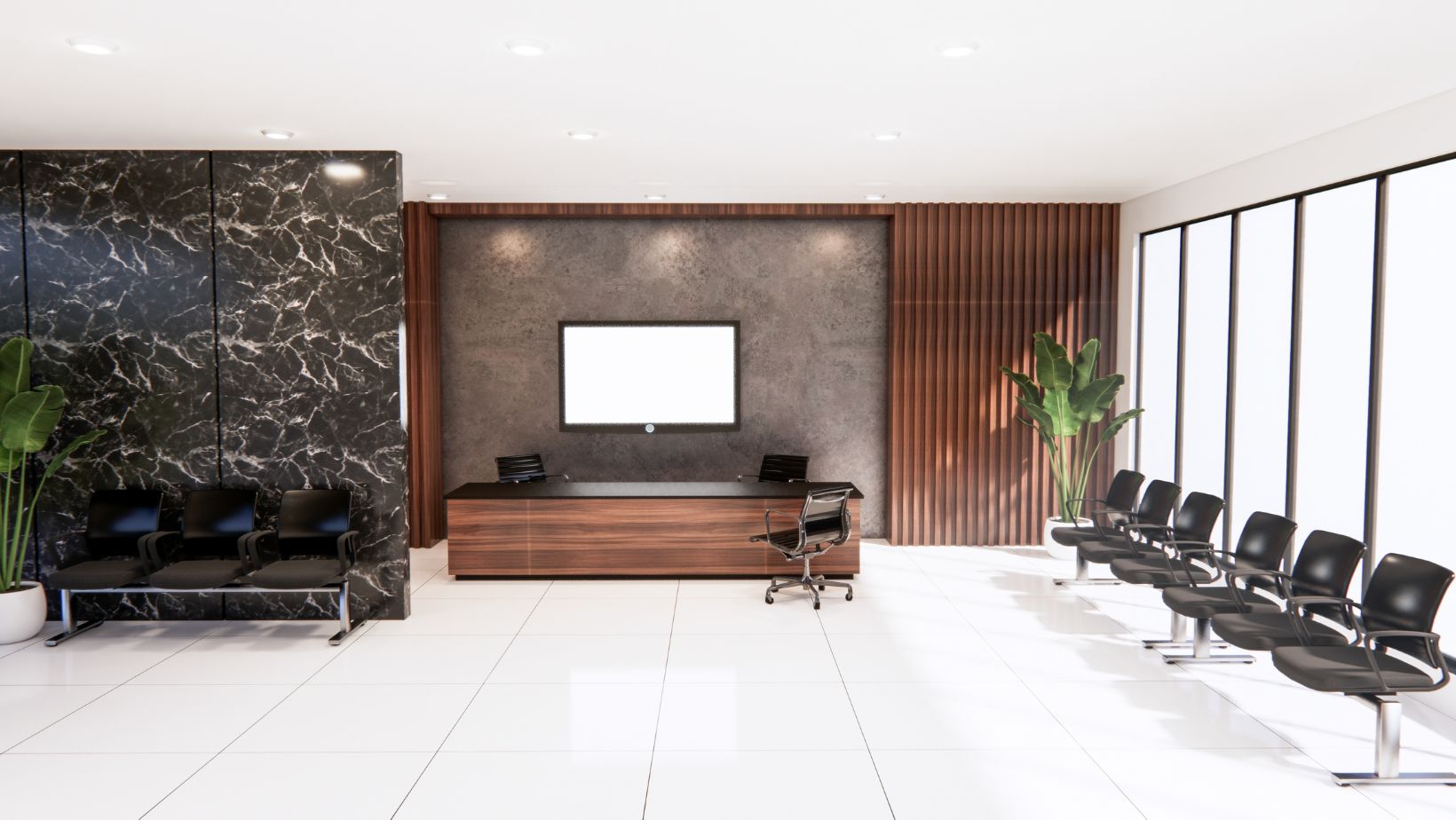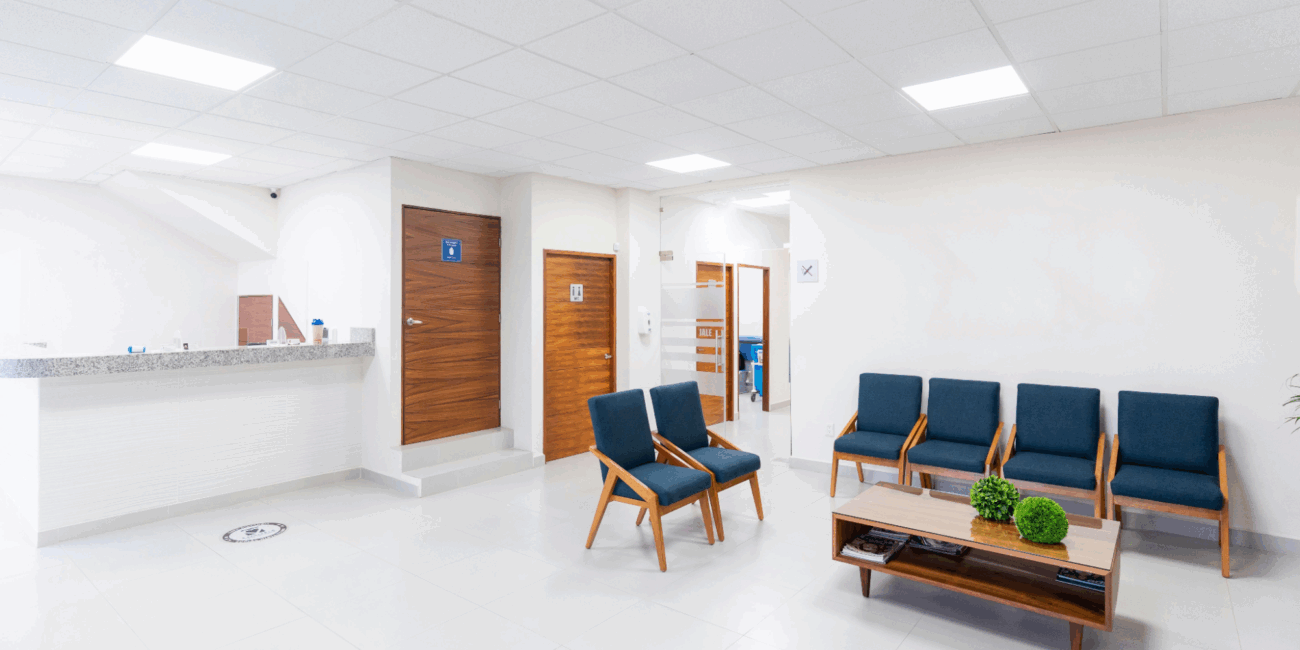Transform your psychology practice waiting area into an environment that supports and assists your clients.
Owners of psychology offices understand that initial impressions are crucial. As soon as your clients enter your practice they begin to form opinions based on their visual and sensory experiences. Here’s the problem:
The majority of psychology office waiting rooms emit a cold atmosphere and fail to provide a welcoming environment.
Psychology practices are transforming their waiting areas by using business-inspired furniture designs. The fusion of corporate design concepts with therapeutic surroundings establishes office spaces that enhance client wellness before they enter your facility.
What you’ll discover:
- Why Business-Inspired Design Works in Psychology Settings
- The Psychology Behind Comfortable Waiting Spaces
- Essential Furniture Elements That Make a Difference
- How to Choose the Right Waiting Room Chairs
- Creating Professional Yet Welcoming Environments
Why Business-Inspired Design Works in Psychology Settings
Psychology practices are businesses too. Successful businesses share a common characteristic where the environment engineers client satisfaction and improves retention rates.
The combination of functionality and professional aesthetics with durable materials in business-inspired furniture designs surpasses traditional healthcare furniture options. This strategy aims to transform waiting spaces into sophisticated corporate lounge settings instead of typical clinical waiting areas.
Here’s why this matters:
Clients who experience comfort and value while waiting for appointments reach their sessions with improved mental preparedness. Therapeutic preparation lies at the heart of these design choices beyond mere aesthetics.
Reducing Pre-Appointment Anxiety
The majority of clients report experiencing some degree of anxiety prior to attending their therapy appointments. The waiting room environment plays a major role in either increasing or decreasing client anxiety levels.
The principles of business-inspired design create comfortable spaces with open layouts and soothing color schemes. The combination of these elements establishes psychological safety for clients before their therapy sessions start.
Furniture in corporate offices serves as a visual cue to express both stability and success. Psychology practices must employ similar principles because clients demand confidence in their therapist’s professionalism and abilities.
Building Trust Through Environment
Trust serves as the essential base for successful therapeutic relationships. Clients first start to trust you when they enter your waiting room.
Professional-grade furniture shows clients that your practice prioritizes quality and demonstrates your commitment to professionalism. Waiting room chairs that look and feel expensive communicate that you value your clients’ comfort and experience.
Consider whether you would trust a financial advisor who uses cheap uncomfortable chairs to furnish his office. The same psychology applies to therapy practices.
The Psychology Behind Comfortable Waiting Spaces
Psychological studies have demonstrated why comfortable waiting areas are essential in therapy practices.

Studies demonstrate that environmental conditions have a direct effect on people’s stress levels as well as their mood and ability to engage in treatment. Clients who experience physical comfort demonstrate greater emotional openness throughout their therapy sessions.
The comfort-therapy connection works like this:
Physical comfort leads to lower cortisol levels which are linked to stress and anxiety. Clients who experience reduced stress in waiting areas enter their appointments with a more emotionally stable mindset.
Environmental Psychology Principles
Environmental psychology research reveals that human behavior and emotional conditions are deeply influenced by different physical environments. The importance of environmental psychology principles increases when applied to therapy environments. Professional business furniture integrates essential environmental psychology elements such as color psychology, spatial comfort, texture variety, and lighting integration to establish calming and professional environments.
Neuroscience research demonstrates people develop permanent impressions about spaces the instant they step into them. The furniture in your waiting room directly impacts client perceptions before their appointment begins which explains why professional business furniture establishes positive first impressions that continue during therapy sessions.
Essential Furniture Elements That Make a Difference
Different varieties of furniture have varying levels of suitability for psychology office waiting rooms. Business-inspired design emphasizes particular elements to achieve a combination of comfort and professional appearance.
Psychology office waiting rooms require specific foundational furniture pieces.
Seating That Actually Supports
The typical chairs found in healthcare waiting rooms lack comfort and look like institutional furniture. Business-inspired seating takes a completely different approach.
The ergonomic design principles developed for corporate environments apply flawlessly to therapeutic settings. Clients immediately recognize comfort when they sit in chairs that combine proper lumbar support with adequate cushioning and professional finishes.
Tables and Lighting Integration
Functional comfortable spaces emerge from the combined effects of side tables and lighting solutions. The business-inspired design approach demonstrates how these elements support each other to deliver both convenient storage solutions for clients and warm lighting that facilitates relaxation.
How to Choose the Right Waiting Room Chairs
Selecting waiting room chairs for psychology practices involves evaluating multiple factors to achieve the right balance. Selecting professional-looking furniture is important but it also needs to meet therapy clients’ specific requirements.
Here’s what to prioritize:
Comfort Over Everything
Therapy clients often spend substantial time in your waiting area. Certain patients come early to their sessions to relax while others stay in the waiting area between their family appointments. Comfort isn’t optional – it’s essential.
Psychology settings require more ergonomic design features than standard business environments. Therapy clients facing stress or depression symptoms require supportive seating which aids their emotional condition.
Within the UK market, chairs and seating solutions are seeing substantial growth due to increasing demand for ergonomic designs that improve posture and reduce fatigue. Psychology practices that spend money on quality furniture gain advantages from the current market trend.
Durability for High-Use Environments
Psychology practices experience consistent client visits all day long. Your furniture must handle regular use yet preserve its aesthetic appeal and comfort level.
Professional environments with heavy traffic receive furniture specifically crafted to meet their unique demands. The construction elements combine with materials and finishes to ensure longevity of several years instead of months.
Aesthetics That Support Therapy Goals
Ensure your waiting room furniture visually supports your therapeutic style and matches the characteristics of your client base.
Modern office furnishings display minimalist lines and basic tones suitable for psychology practice environments. These pieces create a professional atmosphere without appearing chilly or institutional.
Creating Professional Yet Welcoming Environments
Designers face the primary obstacle of creating psychology offices that combine professional appeal with warmth. Business-inspired furniture addresses this challenge through refined designs that maintain approachability.
The color palettes of business furniture which typically include neutral tones make them ideal for therapeutic settings. Professional appearances arise from grays combined with soft blues and warm beiges which emotional comfort supports according to color psychology research.
Business furniture materials deliver lasting strength while offering pleasant sensory benefits. Quality hardware alongside soft fabrics and smooth wood finishes delivers tactile experiences that maintain client wellbeing and prevent sterile space sensations.
Maintenance and Care for Lasting Results
To preserve both the professional appearance and comfort of business-inspired furniture it needs proper maintenance. Maintaining hygiene standards depends on regular cleaning protocols which require vacuuming and professional cleaning for fabric surfaces and conditioning treatments for leather surfaces.
Implementing preventive care strategies such as cushion rotation together with quick spill response significantly extends furniture life.
Figuring Out Your Next Steps
Psychology office waiting rooms achieve a balance between professional aesthetics and client comfort through business-inspired furniture which replaces sterile clinical spaces with inviting environments. Using quality seating and thoughtful design elements delivers measurable improvements to client experience.

Integrating corporate design principles with therapeutic goals results in environments that help achieve treatment success. The therapeutic relationship starts in your waiting room, which requires business-inspired furniture to create a positive first impression that aligns with your clinical objectives.
The upfront expenses result in better client satisfaction while building professional credibility and lowering replacement costs over time. The moment clients enter your office they will immediately perceive the difference.



